The wind turbine slip ring is responsible for the overall power of the wind generator as well as the transmission of data and control signals. The performance of wind power generation systems depends directly on their precision, reliability, and durability.
In order to control the rotating blades of wind turbines, there must be reliable electrical power and data transmission. Slip rings for wind turbines are characterized by elastic lap joints, rolling laps, sealings, and ingenious movement structures.
Additionally, precision parts and reasonable materials are employed in the design. Together, they form a rotary connection system that is durable and reliable. Slip rings are designed specifically for this demanding environment and they deliver both performance and quality. The pitch control slip ring for wind turbine design trends is centered around two things. One, the power output and size of turbines are increasing, which leads to a higher power transfer demand for pitch control slip rings. The monitoring of signal and data handling conditions is yet another requirement.
Why Do Use Slip Ring for Wind Turbine?
Slip rings are used in wind turbines to transmit power and data signals from the rotating blades to the stationary base of the turbine. Here’s why slip rings are essential in wind turbine applications:
1. Transmission of Electrical Power
- Generator Connection: Slip rings enable the transmission of electrical power generated by the rotating blades to the stationary parts of the wind turbine system, allowing continuous power transfer without the need for physical wires that could twist and break.
2. Data and Signal Transmission
- Control Signals: Slip rings facilitate the transmission of control signals from the turbine’s control system to the blades, enabling adjustments for optimal performance.
- Sensor Data: They allow the transfer of data from various sensors located on the rotating parts of the turbine, such as speed, temperature, and vibration sensors, to the control system.
3. Uninterrupted Operation
- Continuous Rotation: Slip rings enable the blades to rotate freely while maintaining electrical and data connections, which is crucial for the continuous operation of wind turbines.
- Reduced Wear and Tear: Unlike cables that would twist and wear out quickly, slip rings provide a durable solution that minimizes mechanical stress.
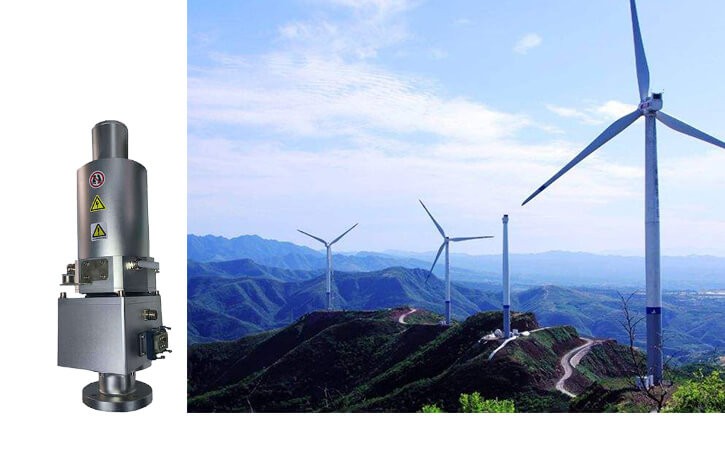
4. Improved Efficiency
- Minimized Downtime: By providing reliable power and signal transmission, slip rings help in reducing maintenance and downtime, leading to higher efficiency and productivity of wind turbines.
- Enhanced Performance Monitoring: Continuous data transmission helps in real-time monitoring and timely maintenance, enhancing the overall performance of the wind turbine.
5. Design Flexibility
- Customization: Slip rings can be designed to meet specific requirements of different wind turbine models, offering flexibility in design and integration.
In summary, slip rings play a critical role in ensuring the efficient and reliable operation of wind turbines by enabling the seamless transmission of power and data between rotating and stationary components.

The Importance of Wind Turbine Slip Rings
Technology for turbine slip rings has evolved in tandem with the growth of the wind energy industry. The importance of these devices should not be underestimated despite their small size. From the control system for the rotary blades to the nacelle, wind turbines require reliable transmission of power and data, which slip rings are designed to provide. From the nacelle to the rotary blade control system, wind turbines need a reliable transmission of power and data signals. Slip rings offer reliability and quality in end-user environments that are highly demanding. Downtime can be eliminated with fiber brushes and a slip-ring design that offers robust mechanical components.
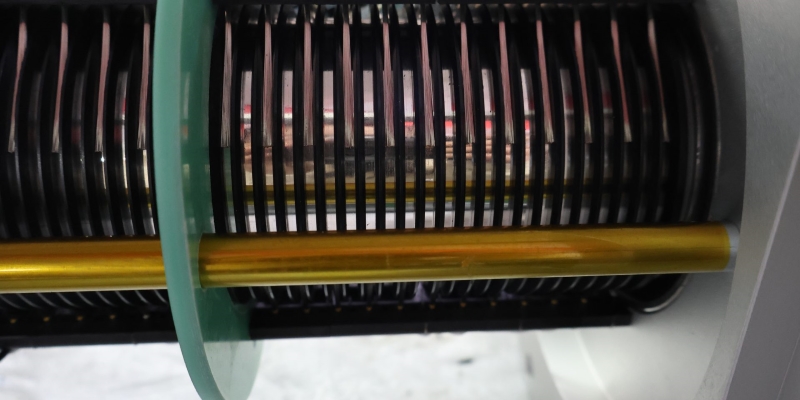
The importance of slip rings in wind turbines can be summarized through several key aspects:
1. Continuous Electrical Power Transfer
- Essential for Operation: Slip rings are vital for the uninterrupted transfer of electrical power generated by the wind turbine’s rotating blades to the stationary parts of the turbine.
- Reduced Mechanical Stress: They eliminate the need for physical wires that could twist, tangle, and wear out, thereby reducing mechanical stress and extending the lifespan of the electrical connections.
2. Data and Signal Transmission
- Real-Time Monitoring: Slip rings allow continuous transmission of data from sensors on the blades to the control system, facilitating real-time monitoring and adjustments.
- Control System Communication: They enable the transfer of control signals to the blades, allowing for precise adjustments to optimize performance and efficiency.
3. Uninterrupted Rotation
- Free Movement: Slip rings enable the wind turbine blades to rotate freely without disrupting the electrical and data connections, which is essential for capturing wind energy efficiently.
- Reduced Maintenance: By allowing continuous rotation, slip rings minimize wear and tear on the connections, reducing the need for frequent maintenance and associated downtime.
4. Increased Efficiency and Reliability
- Minimized Downtime: Reliable slip rings contribute to higher turbine availability and reduced downtime, ensuring consistent energy production.
- Enhanced Performance: Continuous and reliable data transmission helps in optimizing turbine performance and efficiency through better control and timely maintenance interventions.
5. Durability and Longevity
- Robust Design: Slip rings are designed to withstand harsh environmental conditions, including extreme temperatures, moisture, and dust, which are common in wind turbine operations.
- Extended Service Life: High-quality slip rings enhance the overall durability and longevity of the wind turbine by ensuring reliable connections over time.
6. Safety
- Stable Connections: Slip rings provide stable and secure electrical connections, reducing the risk of electrical faults that could lead to safety hazards.
- Preventing Overheating: By maintaining good contact and minimizing resistance, slip rings help in preventing overheating, which can be a critical safety concern in wind turbine operations.
7. Customization and Adaptability
- Tailored Solutions: Slip rings can be customized to meet the specific requirements of different wind turbine designs, offering flexibility and adaptability in various applications.
- Integration with Advanced Systems: They can be integrated with advanced monitoring and control systems, enhancing the overall capabilities of modern wind turbines.
In conclusion, slip rings are a crucial component in wind turbines, playing a significant role in ensuring continuous power transfer, reliable data and signal transmission, efficient operation, durability, and safety. Their importance cannot be overstated, as they directly impact the performance, reliability, and longevity of wind turbines.
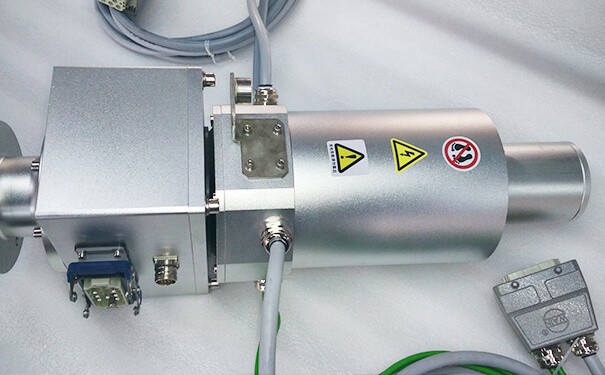
What Types of Slip Rings Are Used in Wind Turbines
In wind turbines, several types of slip rings are used to cater to different requirements and functionalities. The main types include:
1. Electro-Mechanical Slip Rings
These are the most common type used in wind turbines, designed to transmit electrical power and signals between the rotating and stationary parts of the turbine.
- Standard Slip Rings: These are general-purpose slip rings used for transmitting electrical power and simple signals. They are robust and designed for long-term operation.
- High-Current Slip Rings: These are specialized slip rings designed to handle high-current loads, necessary for transmitting power from the generator to the grid.
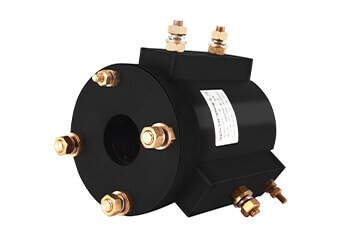
2. Fiber Optic Slip Rings (FORJs)
Fiber optic slip rings, or Fiber Optic Rotary Joints (FORJs), are used for transmitting high-speed data signals.
- Single-Channel FORJs: These are used for simple, single data channel applications.
- Multi-Channel FORJs: These are used when multiple data channels are required, allowing for complex data transmission such as real-time monitoring and control signals.
3. Hybrid Slip Rings
Hybrid slip rings combine electrical and fiber optic channels within the same unit, allowing for the simultaneous transmission of power, electrical signals, and high-speed data.
- Electrical and Fiber Optic Hybrid: These slip rings integrate both electrical circuits and fiber optic channels, suitable for advanced wind turbine systems requiring both power transmission and high-speed data communication.
4. Capsule Slip Rings
Capsule slip rings are compact and enclosed units, ideal for applications where space is limited.
- Compact Designs: These slip rings are designed to be small and lightweight, making them suitable for use in wind turbines where space constraints are a consideration.
5. Through Bore Slip Rings
Through bore slip rings have a hollow center, allowing cables or other components to pass through the middle of the slip ring.
- Large Diameter Through Bore: These are used in wind turbines to allow for the passage of large shafts or cables through the slip ring, facilitating the transmission of power and signals around the rotating shaft.
6. Pancake Slip Rings
Pancake slip rings have a flat, disk-like shape and are used in applications where vertical space is limited.
- Flat Profile: These slip rings are designed to have a low vertical profile, making them suitable for wind turbine designs where vertical space is restricted.
7. Customized Slip Rings
Customized slip rings are designed to meet specific requirements of different wind turbine models.
- Tailored Solutions: These slip rings can be customized in terms of size, number of circuits, type of transmission (electrical, data, or both), and environmental protection, ensuring optimal performance for specific turbine designs and operating conditions.
In conclusion, the choice of slip ring type in wind turbines depends on the specific requirements of the application, including the need for power and data transmission, space constraints, and environmental conditions. The variety of slip rings available ensures that there is a suitable option for every wind turbine design and operational need.
How to Choose Slip Rings of Wind Turbines
Choosing the right slip rings for wind turbines involves considering several critical factors to ensure they meet the specific operational requirements and environmental conditions. Here are the key considerations:
1. Electrical Requirements
- Current and Voltage Ratings: Determine the maximum current and voltage that the slip ring needs to handle. High-current slip rings may be required for power transmission, while low-current ones might suffice for signal transmission.
- Number of Circuits: Assess the number of separate electrical circuits needed. This includes power, control signals, and data transmission circuits.
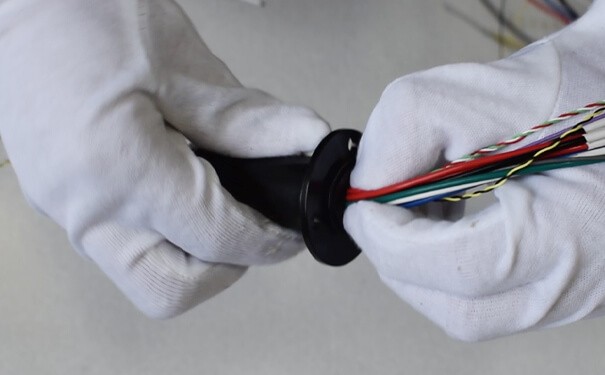
2. Data Transmission Needs
- Type of Data: Identify if the slip ring needs to transmit high-speed data, control signals, or both. For high-speed data, fiber optic slip rings or hybrid slip rings (combining electrical and fiber optic channels) might be necessary.
- Bandwidth Requirements: Ensure that the slip ring can handle the required data bandwidth, especially if real-time monitoring and control are essential.
3. Mechanical Considerations
- Size and Space Constraints: Consider the available space within the wind turbine for the slip ring. Capsule slip rings are compact, while through bore slip rings might be needed if a central shaft passes through the slip ring.
- Rotation Speed: Check the maximum rotational speed the slip ring can handle, which should match or exceed the turbine’s operating speeds.
- Durability and Lifespan: Look for slip rings designed for long-term operation with minimal maintenance. Materials and construction quality are important for durability.
4. Environmental Conditions
- Temperature Range: Ensure the slip ring can operate within the temperature range expected in the turbine’s location.
- Humidity and Dust Resistance: In harsh environments, slip rings with IP ratings for moisture and dust resistance are essential.
- Vibration and Shock: The slip ring should be able to withstand the mechanical stresses, including vibrations and shocks, typical in wind turbine operations.
5. Maintenance and Reliability
- Maintenance Requirements: Choose slip rings that require minimal maintenance and have a proven track record of reliability to reduce downtime and maintenance costs.
- Monitoring Capabilities: Some advanced slip rings come with self-monitoring capabilities that can alert operators to potential issues before they cause failures.
6. Customization and Scalability
- Custom Designs: If standard slip rings do not meet all the requirements, consider working with manufacturers to design custom slip rings tailored to specific needs.
- Future-Proofing: Consider the potential for future upgrades or changes in turbine technology. Selecting slip rings that can accommodate future requirements can save costs and effort down the line.
7. Cost and Supplier Support
- Budget: While it’s important to consider the cost, ensure that the chosen slip ring provides the best value in terms of performance, durability, and reliability.
- Supplier Support and Warranty: Choose reputable suppliers that offer good technical support, warranties, and after-sales service.
8. Compliance and Standards
- Industry Standards: Ensure the slip rings comply with relevant industry standards and certifications for safety and performance.
- Regulatory Requirements: Check for compliance with local regulations and standards applicable to wind turbines in the installation area.
To choose the right slip rings for wind turbines, evaluate the electrical and data transmission requirements, mechanical and environmental conditions, maintenance needs, and potential for customization. Collaborate with reputable suppliers to ensure the slip rings meet all operational demands while providing reliability and longevity.
What Should Be Considered When Selecting Slip Rings for Wind Turbines
- A hundred million revolutions of maintenance-free operation
- with no lubrication needed
- Low wear debris generation
- Broad operating temperature range
- Long life cycle
- Ensures high reliability
- with no need for periodic inspections


